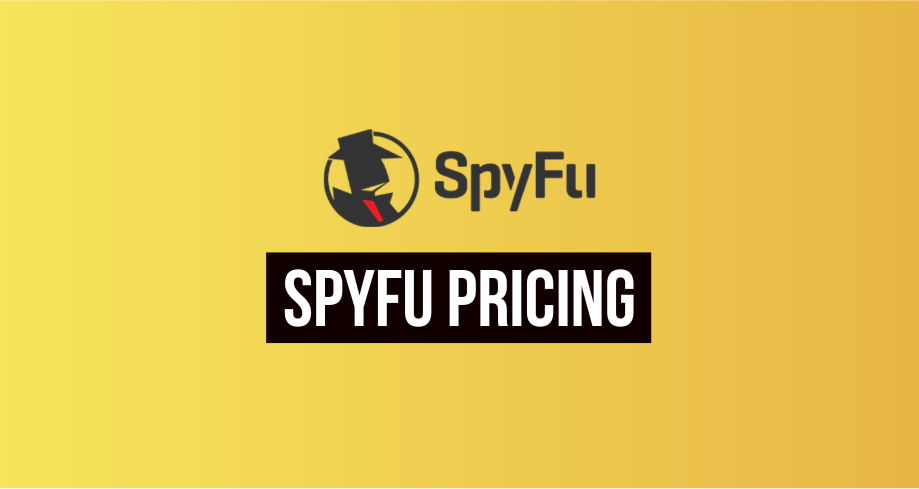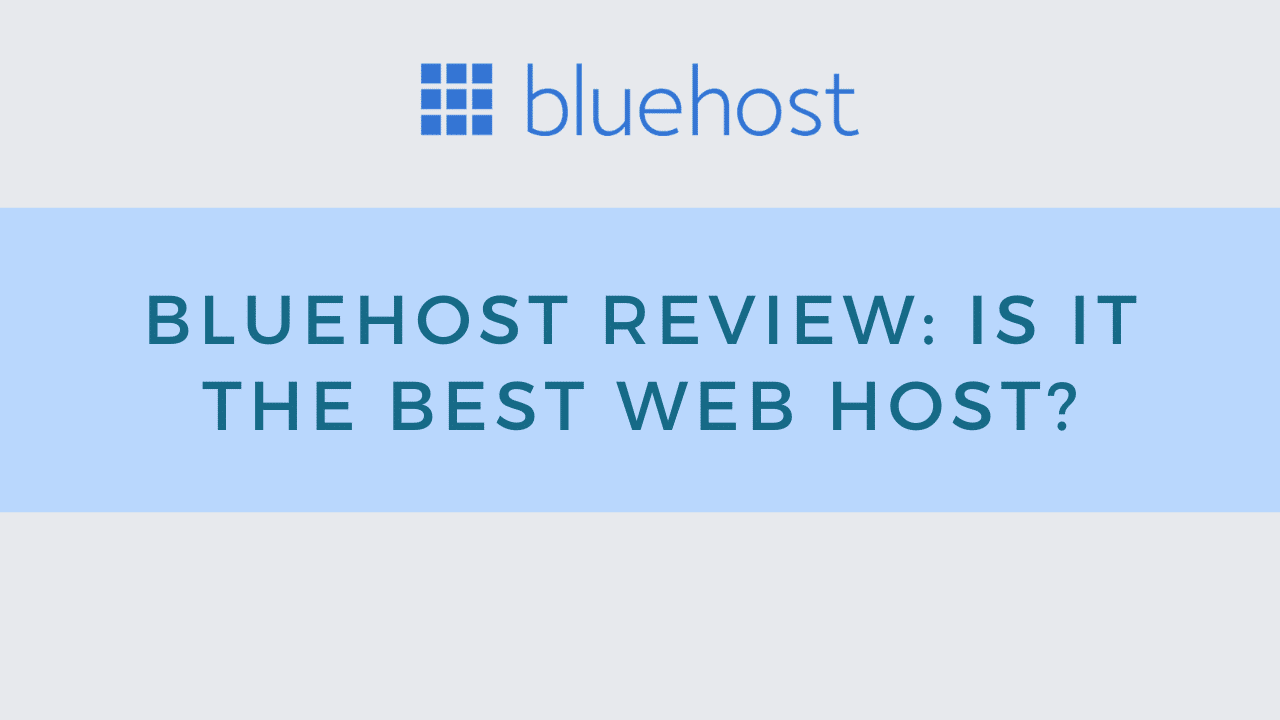SpyFu is a powerful online tool that helps businesses of all sizes to build their presence on the web. It offers a wide range of features for both SEO and PPC, making it an invaluable asset for any digital marketing strategy. But with so many features available, how much does SpyFu cost?
SpyFu pricing starts at just $33 per month when you opt for the annual plan. This gives you access to all basic features including keyword research tools, competitive analysis tools, backlink tracking, and more. If you need more advanced features such as API access or custom data exports then prices can rise up to $399 per month depending on your needs. No matter what level of service you require, however, SpyFu provides excellent value for money by giving users access to comprehensive market insights and analytics across multiple areas of SEO and PPC performance metrics.
Is SpyFu Good?
SpyFu is an effective tool for competitive analysis and search engine optimization (SEO). It helps digital marketers analyze the competition, profitable research keywords, and create successful online advertising campaigns. The software provides detailed data about a website’s organic and paid search performance.
By using SpyFu, you can identify the most profitable keywords to target in your SEO efforts. You can also analyze competitors’ websites to find out which keywords are driving their organic traffic. Moreover, you have access to valuable insights into which ads the competitors are running on Adwords, as well as how often they appear in organic and paid results. All of this data gives you a better understanding of how they are optimizing their campaigns and what strategies you should use in yours.
SpyFu also offers powerful reporting tools that allow users to track and monitor their performance over time. You can get instant feedback on all your keyword rankings, measure ROI from ad investments, see where your competitors are outranking you, and more. You can even compare your past performance with that of your competitors so you know where changes need to be made in order to stay ahead of the game.
Overall, SpyFu is an incredibly useful competitive intelligence tool for digital marketers looking to gain a competitive edge in their industry. With its detailed insights into competitor strategies, robust keyword rank tracking capabilities, and easy-to-use analytics tools, it gives users the power to make informed decisions about their campaigns and quickly optimize them for maximum results. If you’re serious about getting ahead of the competition, SpyFu is definitely worth taking a look at!
How Does SpyFu Get its Data?
One of SpyFu’s most powerful features is its ability to gather data from millions of websites around the world. It uses sophisticated algorithms to find public records related to business activities and analyze them for relevant information. This includes analyzing domain names, IP addresses, hosting locations, and other characteristics related to website ownership. The tool can also monitor the activity of sites such as blogs or forums through SEO keywords or phrases associated with those sites.
In addition to public records, SpyFu also collects data from web analytics services like Google Analytics or Adobe Analytics. With this information, it can provide metrics such as bounce rates or visitor flow that can be used to track conversions or evaluate the performance of campaigns over time. Web servers are also monitored for popular keywords used in searches so that SpyFu can identify trends in terms of what people are looking for on the internet.
Advertising networks are another source of data used by SpyFu. By monitoring the activity of ad campaigns across networks like Google Ads or Facebook Ads Manager it can provide metrics on impressions and click-throughs that businesses use to measure the effectiveness of their campaigns. Other areas tracked include organic search results for keywords or phrases as well as backlinks from other websites which can be used for SEO purposes.
By utilizing all these different sources of data together, SpyFu is able to provide a comprehensive overview of a business’s online activities which can then be used to make informed decisions about how best to optimize their efforts in order to increase visibility and reach potential customers more easily. With its powerful insights into what competitors are doing as well as broader trends within an industry, it enables businesses large and small alike to take advantage of opportunities they may not have seen before in order to gain an edge over their competition.
SpyFu Review
SpyFu offers comprehensive website analysis reports that provide valuable insight into how websites are performing in terms of organic and paid searches. Its advanced keyword search function helps users find high-value keywords which they can use for their own campaigns. The tool also includes a variety of other features such as AdWords competitors lists and competitor overviews which provide an in-depth look at what the competition is doing online. Additionally, SpyFu allows users to track their website’s ranking history over time so they can identify areas where they need to improve or update their SEO strategies.
What makes SpyFu stand out from other digital marketing tools is its intuitive user interface. It has an easy-to-understand dashboard that presents all the relevant information in a clear way so users can make informed decisions quickly. For those unfamiliar with SEO or digital marketing, SpyFu also includes helpful tutorials and video guides that explain the various features of the platform in detail.
When it comes to pricing plans, SpyFu offers both free versions and premium options. The free plan provides basic website analysis reports such as keyword research tools, competitor overviews, AdWords competitors list, and more. For those looking for more detailed insights into their campaigns, the premium plans offer additional features including full backlink analysis reports and SERP tracking capabilities.
What is the Use of SpyFu?
At its core, SpyFu allows users to identify which keywords their competitors are using, and how successful they are with those keywords, and then use this information to optimize their own SEO campaigns. By analyzing top-performing domains, SpyFu can uncover what works for an industry or domain. Users can also see where their competitors are getting backlinks from, track changes to organic rankings over time, view organic rankings for any domain or keyword, and more.
In addition to SEO data, SpyFu also provides a range of other features that can further help businesses maximize their online presence. For example, they offer PPC research tools so that users can get insights into how their competitors are bidding on PPC keywords and adjust their strategy accordingly. Their AdWords Grader tool provides useful suggestions on how well an AdWords campaign is performing relative to peers based on factors such as clickthrough rate (CTR), the average cost per click (CPC), quality score, and more.
How Do I Use PPC in SpyFu?
When using SpyFu’s PPC tools, you will first want to do keyword research to understand what potential customers are looking for when they search online. This will help you build a list of relevant terms to use in your campaigns, which will then be used by SpyFu to create tailored ad groups and target specific users. Once you’ve identified the best keywords for your campaigns, you can use them in combination with features like competitor keyword analysis and daily budget optimization to optimize your bids and get the most out of each click.
SpyFu also allows users to track their competitor’s performance in real-time, so you can always be one step ahead of them when bidding on similar keywords or targeting similar audiences. You can monitor changes in their spending on certain keywords, or analyze how much website traffic they receive from organic search results versus paid ads. This information can help you adjust your own strategies accordingly and ensure that your campaign is performing at its peak efficiency.
Is SpyFu Better than SEMrush?
When it comes to the ultimate search engine optimization and marketing tool, there are a lot of different options. Two of the top contenders in the market are SpyFu and SEMrush. Both offer powerful features that can help businesses to improve their search engine rankings and reach their target audiences more effectively. So which one is better? The answer to this question really depends on what your specific needs are.
SpyFu offers some great features that allow users to track their competitors’ keywords, see what keywords they’re bidding on, as well as get insights into how successful those campaigns might be. With this information, businesses can determine what strategies they should implement in order to compete with their rivals. SpyFu also allows users to stay on top of competitor changes in organic rankings, giving them an edge over the competition. Additionally, users can look at backlinks that competitors have pointed toward their website so that they can replicate success found elsewhere.
On the other hand, SEMrush is another popular tool when it comes to SEO and internet marketing services. This platform allows users to monitor website performance across a variety of metrics such as traffic sources, keyword rankings, backlinks, and more. It also provides a social media dashboard where you can monitor multiple free accounts in one central location for a comprehensive view of your online presence. Additionally, it also has tools for tracking brand mentions across various channels such as Twitter or Facebook so that you can respond quickly to customer feedback or criticism before it spirals out of control.
Does SpyFu Have a Free Trial?
Yes, SpyFu does have a free trial! The free trial offers potential customers the opportunity to try out SpyFu’s comprehensive analytics and SEO tools before committing to a plan. With the free trial, users can access full key features of the platform including keyword research, backlinks analysis, and organic keyword tracking. With this toolkit, you’ll be able to gain insights about your competitors’ SEO strategies as well as opportunities for visibility within search engine results pages (SERPs).
SpyFu’s free trial offers an impressive 30 days of usage with no credit card information required. During this time, users can generate unlimited reports and dig into competitor research that they otherwise miss out on with other platforms. Additionally, SpyFu offers tutorials and support resources to get up and running quickly and intuitively.
Spyfu Best SEO Tools for Competitor Keyword Research
One of SpyFu’s biggest advantages is its ability to search for specific key phrases that you know your competitors are targeting. This helps you build a more complete picture of their SEO efforts, allowing marketers to adjust their own strategies in response. SpyFu also offers detailed analytics about each keyword’s performance in organic search results and paid search ads, giving marketers the ability to optimize campaigns for maximum ROI.
In addition to basic keyword research capabilities, SpyFu provides reports that offer unique insights into where your competitors are spending money on Google Ads and what kind of impact it’s having on organic search performance. It can also help you find new ad copy ideas by analyzing what similar terms or phrases your competitors are using in their campaigns.
Finally, SpyFus’ backlink analysis tool gives users the ability to track where their competitors are getting links from and the anchor text used in those links. This enables them to gain a comprehensive view of who is linking to their competitor’s website and discover potential link-building opportunities they may not have been aware of otherwise.
Is Serpstat Free?
No, Serpstat is not free. It offers a wide range of pricing plans to fit different budgets and needs. The most basic plan starts at $69/month and offers access to keyword research tools and SEO analytics. If you need more features, you can upgrade to the more expensive plans that offer website audits, competitive analysis, backlink monitoring, and many more advanced features.
Serpstat also offers a 7-day free trial where you can get access to all the major features without paying anything. This allows you to test the platform extensively before deciding whether or not it’s worth investing in for your digital marketing needs.
The platform also provides a lifetime money-back guarantee if you’re not satisfied with the service within 30 days of purchase. This gives users much-needed peace of mind that their money won’t go wasted if they’re unhappy with the product or service they receive from Serpstat.
How Do I Spy on Google Ads?
To spy on Google Ads, you can use a variety of tools to identify and analyze the ads that are being used by your competitors. You can examine the keywords being used, track how successful certain advertisements are performing, compare ad copy and even find out what URLs are associated with each campaign. Additionally, there are analytics tools available that provide insights into which ads audiences respond to most effectively. By utilizing these various tools, you will be able to gain valuable intelligence regarding your competitor’s ad strategies and create an effective plan of your own.
How Do I Find My Competitors’ Keywords for Free?
You can use free online tools such as Google AdWords Keyword Planner, Ubersuggest, and Semrush to find your competitors’ keywords. With these tools, you can research keyword ideas, get monthly search volume and estimated CPC data as well as understand which topics are trending in your industry. Additionally, many of these tools allow you to compare multiple websites side-by-side so you can see what words each website is ranking for in organic search results. This information will give you a better understanding of how to optimize for certain terms and phrases related to your own business.
How Do I Get More PPC Clicks?
PPC involves bidding on keywords that potential customers might use in their search queries. When someone searches using those terms, your ad will appear and you’ll pay a fee each time someone clicks on it. This makes it easier to reach people who are interested in what you have to offer, rather than relying on broad-based marketing strategies.
There are several steps you can take to get more PPC clicks and increase the effectiveness of your campaigns. First, you’ll need to choose the right keywords for your ads. Focus on relevant terms that accurately describe the products or services you offer and make sure they have enough search volume. You should also research competitors’ ads in order to gain insights into which keywords may bring more success.
In addition, create compelling ad copy that clearly explains what makes your product or service unique and why people should click through and purchase from you versus another vendor. Use compelling phrases such as “Free Shipping Now” or “Limited Time Offer”. Also, remember to include a strong call-to-action (CTA) such as “Buy Now” or “Sign Up Today” so users know exactly what they should do next once they click on your ad.
How Many Keywords Should I Use for PPC?
When creating an effective pay-per-click (PPC) campaign, the right keyword selection is key to success. Knowing how many keywords you should use for PPC can be a difficult decision, as there is no one-size-fits-all answer. The number of keywords will vary depending on your industry, budget, and overall goals.
For starters, it is important to have a healthy mix of broad, exact-match, and phrase-match keywords in your account. Broad matches are the most general type of keywords and are often used to reach the widest variety of people possible. Exact match keywords are specific phrases that will only trigger ads when someone searches for those exact terms. Finally, phrase match keywords allow you to target searchers who use a similar phrase or combination of words related to your exact match keyword without expanding too much into unrelated search terms.
In addition to types of matches, you should also consider adding negative keywords to your account so that you don’t end up paying for irrelevant clicks from people who aren’t interested in what you’re offering. To get started with negative keywords, start by reviewing the existing search queries in your account and add any obviously unrelated terms as negatives. Doing this will help ensure that your ad spend is better allocated towards more qualified leads and customers who are actually interested in what you’re offering.
At a minimum, you should aim for at least 50 relevant keywords per ad group or campaign. This allows for enough variety of terms so that you can properly test different combinations in order to optimize performance over time. If possible, having even more than 50 could be beneficial – the more options available, the better chance you have at reaching potential customers who may be searching for something specific related to what you offer.
Frequently Asked Questions
What is the best way to structure a PPC account?
When structuring a PPC (Pay-Per-Click) account, there are many important factors to consider. It is essential to ensure that all elements of the PPC account are organized in an efficient and effective way so that maximum performance can be achieved with minimal effort. The best way to structure a PPC account is to start by defining the overall business objectives and target audience. This should be done through careful research and analysis of the market, competitors, and potential customers.
Once the goals have been defined, it is important to create an organized keyword list that is relevant to those goals. This can be done through keyword research tools such as Google Ads Keyword Planner and by identifying relevant phrases used by potential customers when searching for relevant products or services. Once the keyword list has been created, it should then be organized into smaller groups based on similar themes or topics. Having well-organized ad groups will help target more specific audiences by using more targeted ad copy and landing pages.
It is also important to properly set up ad campaigns within the PPC account. Campaigns should be divided into different categories depending on their purpose such as Search Network campaigns for paid search ads and Display Network campaigns for retargeting ads or reaching new audiences with display ads. Each campaign should have its own budget allocated so that campaigns can be monitored independently from one another in order to optimize performance where necessary.
What is the best keyword research tool?
The Google Keyword Planner helps you uncover relevant keywords related to your topic and shows you the estimated searches associated with each phrase or keyword. It also allows you to analyze keyword trends over time and evaluate how competitive a certain keyword might be in terms of optimization efforts. You can then use this data to decide which keywords would be best suited for your website or blog post.
In addition to helping you find relevant keywords, the Google Keyword Planner also provides information on ad auction insights and cost-per-click (CPC) metrics, allowing you to assess the profitability of each keyword before investing in a campaign. It also enables users to compare different websites’ performance in terms of click-through rate (CTR) and the average cost per click (CPC). Although it takes some time and effort to understand all its features, once mastered, it can become an invaluable resource for anyone looking for effective keyword research and optimization strategies.




